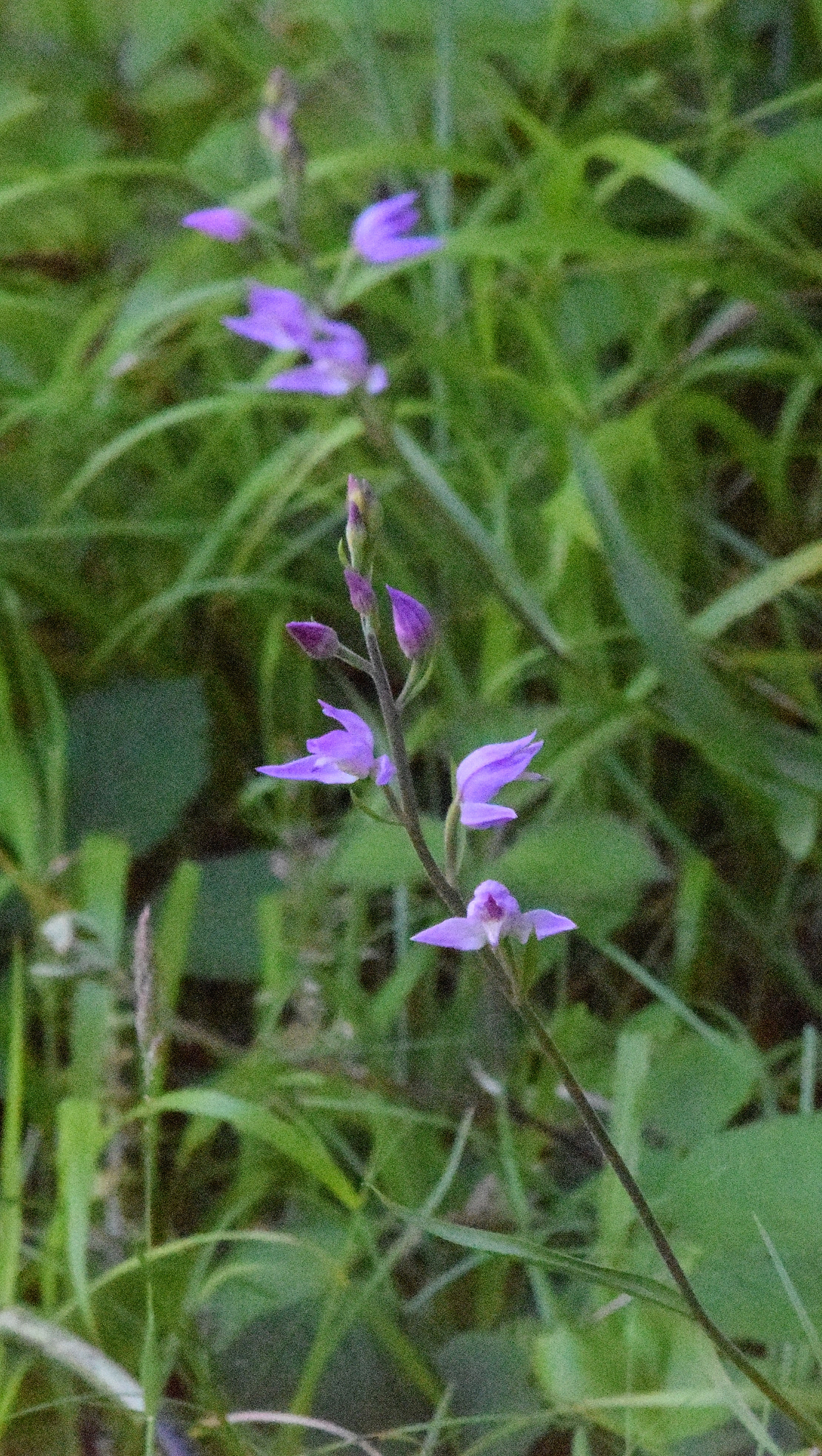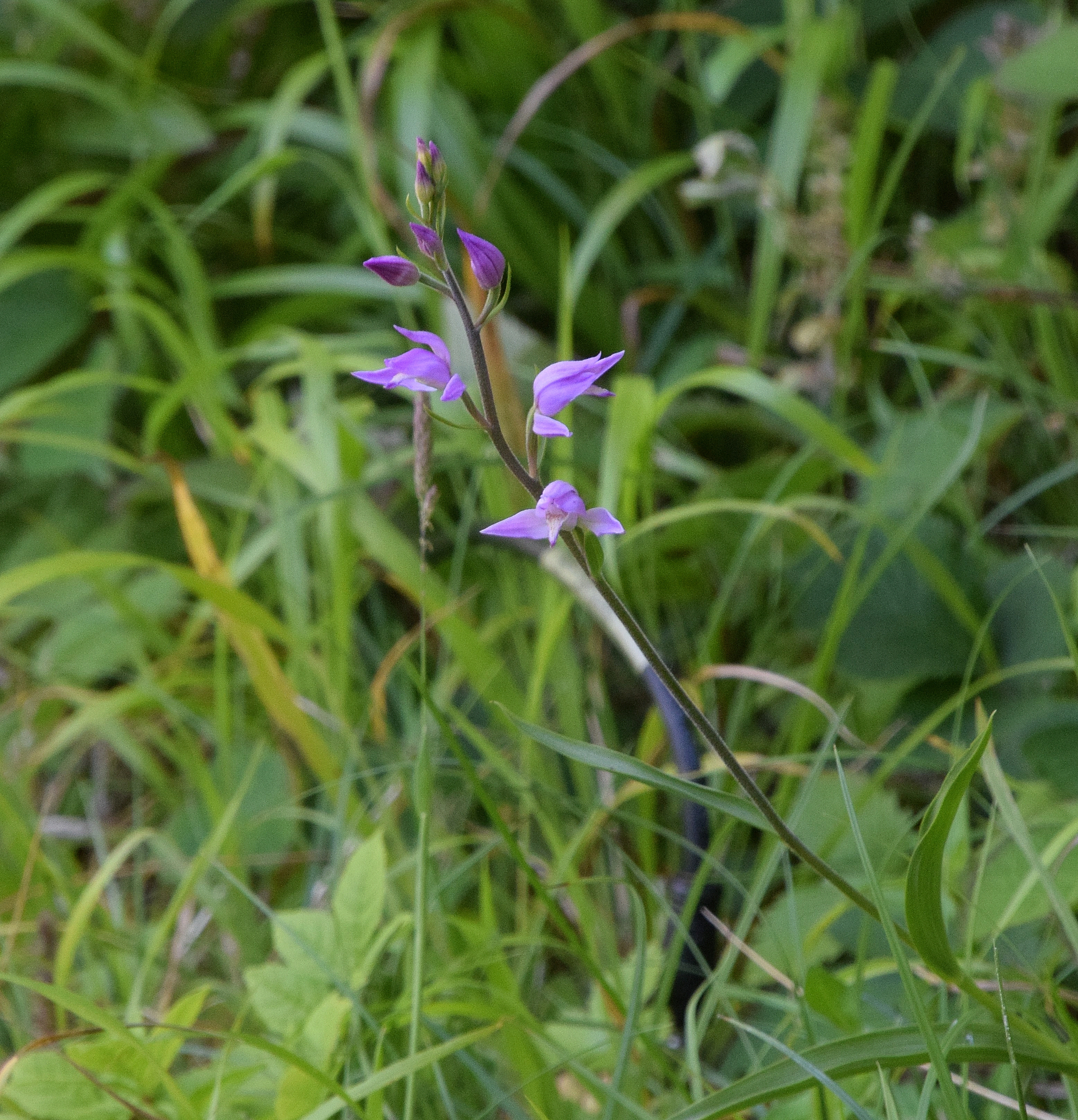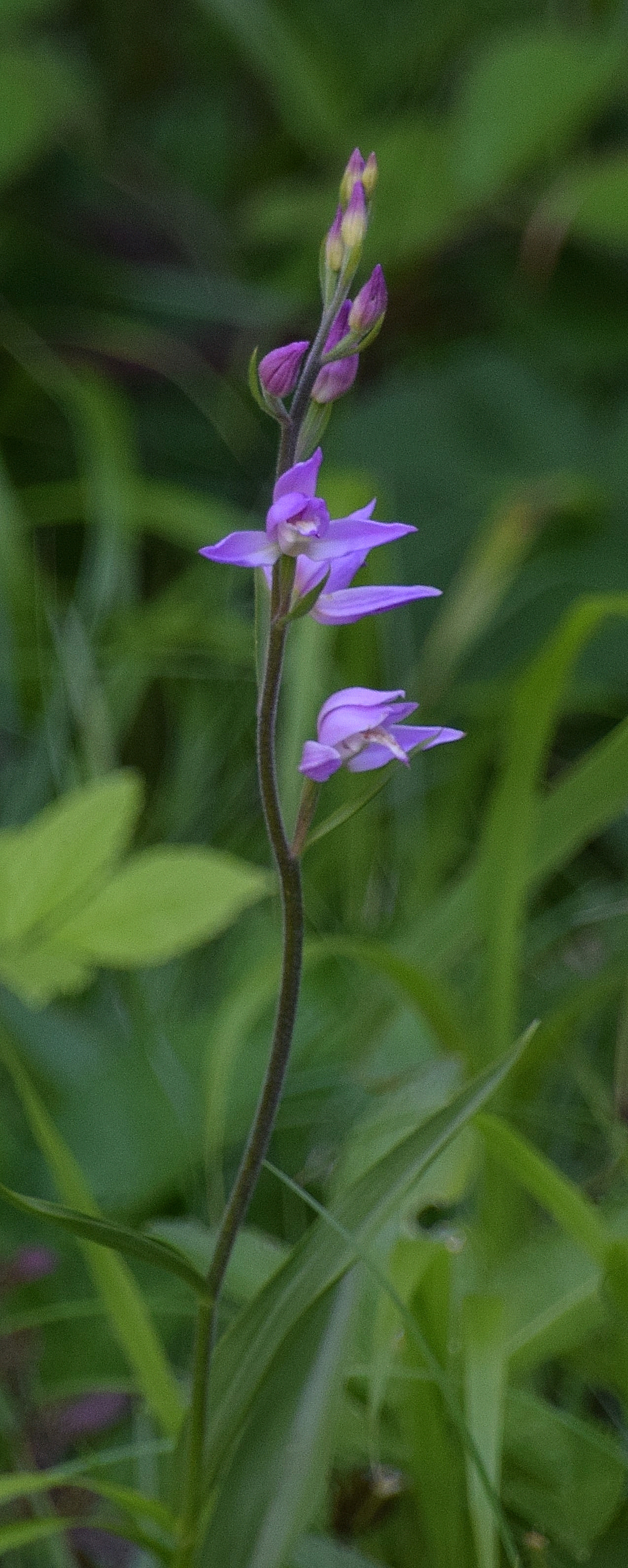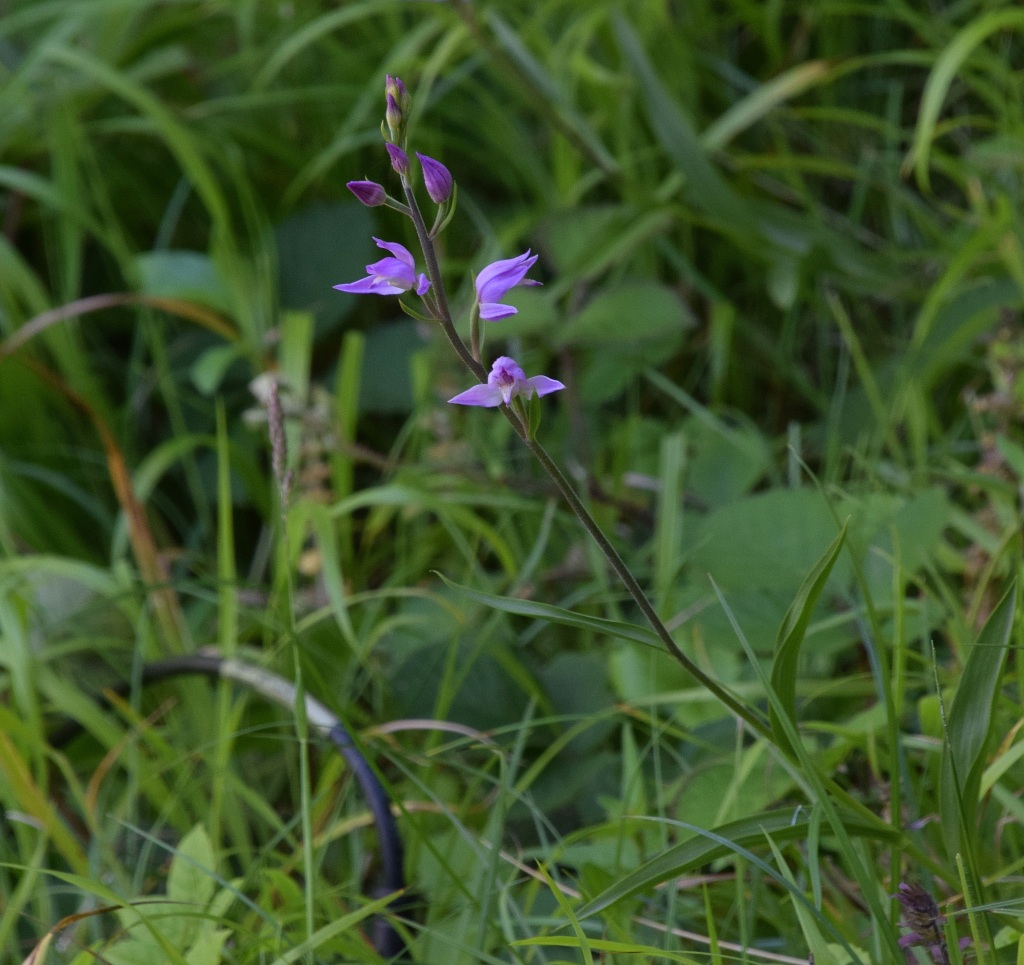I have observed this Orchid once previously in Greece but nationally it has long been restricted to just three places, one of which is conveniently close to home on the Chilterns escarpment. So when I became aware of this day’s Hardy Orchid Society (HSO) field meeting it seemed too good an opportunity to miss. The site is generally known within botanical circles and published online, but highly protected and not publicly accessible. Two flower stems are available to view this year, whilst in some past seasons there has been only one and in others none at all.
Though relatively commonplace in parts of mainland Europe, this much prized species has remained critically endangered and on the verge of extinction at its north-western range limit in the British Isles for the last 40 years. I have read it is a delicate and fussy item that requires exactly the right mix of light and shade in the as particular calcareous woodland habitat it prefers. Hence today’s site is very carefully managed by BBOWT to provide the optimal light levels and prevent damage from grazing deer, rabbits, or even ever-indiscriminate molluscs. Then there are dreaded and much reviled human “diggers up” to guard against, but I understand the plant stock has survived at this spot for much of my lifetime.
Red Helleborine (see here) is sinuous in form with up to 20 well separated flowers on each snaky stalk (20 – 70 cm). The species occurs from late May to July in light, dry woodland mainly of Beech, Pine and Spruce; and especially on calcareous ground. Flower tone is said to be an indicator of soil conditions, with deeper colouration suggesting more calcareous locations. But individual plants are known to lie dormant without blooming for years on end, which adds to their mythical status amongst British enthusiasts.
In the event the HSO operated staggered visits. Having expressed flexibility regarding start time I was invited to join the later and less in demand of the two at 1pm, which suited me after the previous day’s more distant excursion to Sandwich Bay. Gathering at a roadside location, our still large group of 16 was led through private woodland to a rather formidable double enclosure that protects these plants, the only two of their kind blooming in Great Britain this season. Here I learned the likely re-occurrence of a historic cluster in Hants is now in serious doubt, while the third in Glos is also dormant this summer.



At our destination the group spread out around two sides of the inner enclosure fence at the top of a steep hillside, while our BBOWT guide kept up a commentary on all things Red Helleborine with a clear passion for and dedication to these most vulnerable of charges in his care. Both blooms that curled subtly forward and upward from the underscrub within were in pristine condition. Seen through binoculars the plant exuded a quite elegant and graceful quality that my own camera was unable to capture adequately at the enforced distance. I favoured the side view that I felt was better lit. The above are my day’s pictorial records that with editing have turned out to be better than I had expected on site.
This was something I needed to do in my current wildlife enthusiasm, though I didn’t “shake with adrenalin” upon viewing the so supervised subject to quote another blog I consulted during my research. That is not to say I do not appreciate the very special quality of what I witnessed. I have now recorded one of the rarest of all national Orchids, though within an ambience that had little empathy with my previous, cherry-picking solo experiences at motivating locations in the past two months; or indeed the introductory stimulation of a year ago. I’ve now done national Red Helleborine though and need not consider it again.

